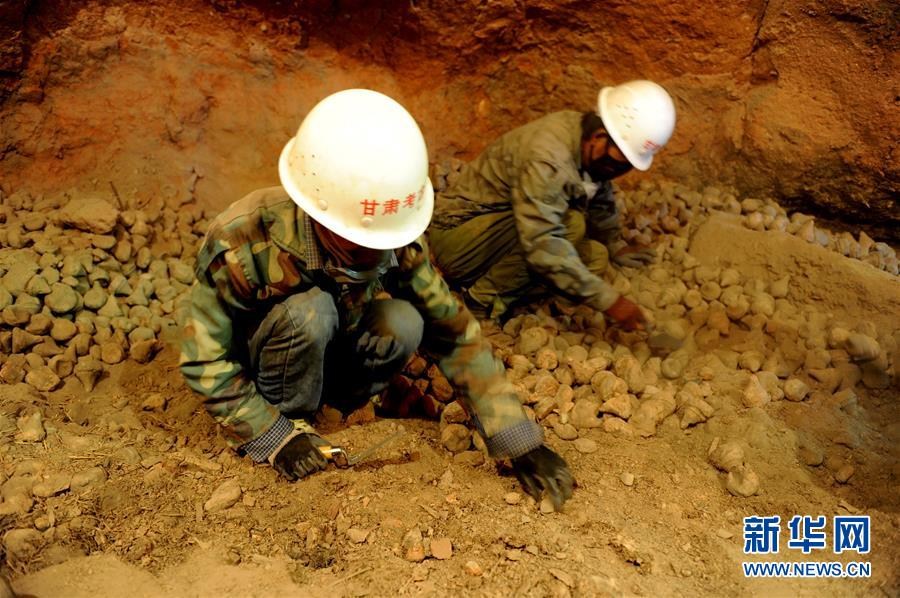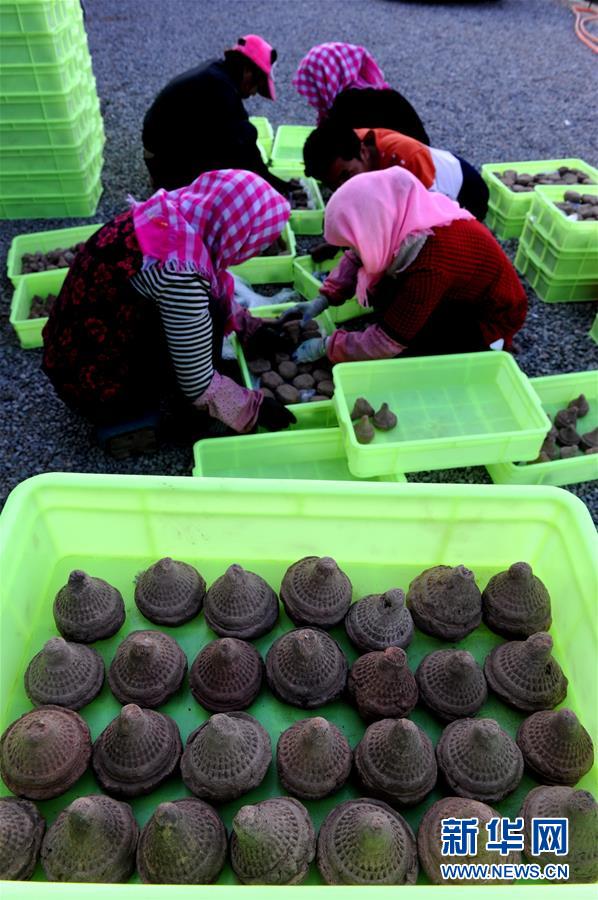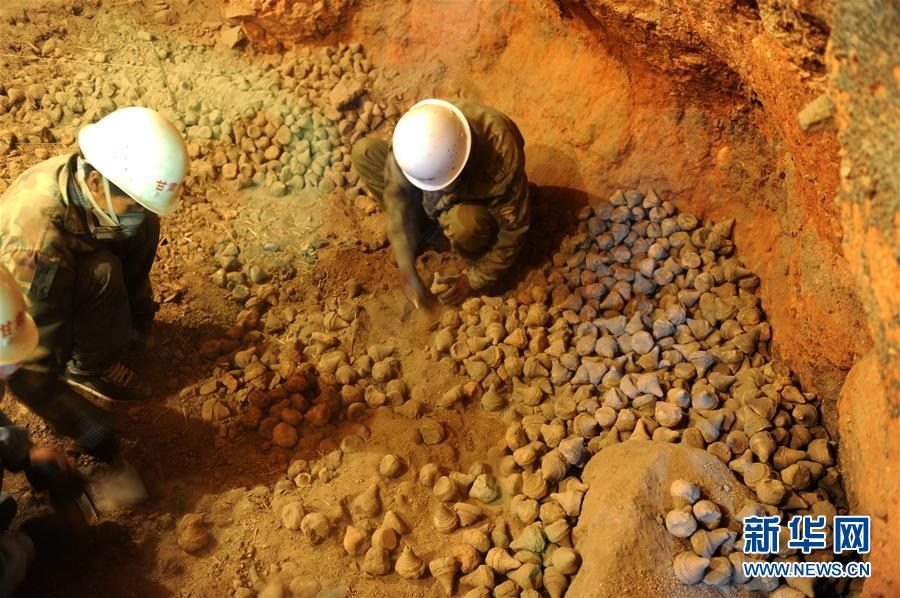Remnant Pieces
of the Text of Buddhist Scriptures Were Found in the Ruins of Cave of the
Western Xia Dynasty (1038-1227) in Gansu
Province

The archaeological
excavation of Haimu Temple ruins of cave in Wuwei of
Gansu province since the beginning of this year has made tremendous progresses
with unearthed more than 40,000 tsha-tsha and a large
amount of remnant pieces of the text of Buddhist scriptures
along with a Tangka ( a painted cloth scroll used for decorating a lamasery
and expounding Tinetan-Buddhist doctrine).
“The 40,000 odd unearthed tsha-tsha is the most being found in the Tibetan Buddhism
temple of Gansu for the first time,” said
by Zhao Xueye, researcher of the Gansu Institute of
Cultural Heritage and Archaeology and the leader of this archaeological
excavation. “There are many unearthed remnant pieces of the text of Buddhist
scriptures written in the language of Western Xia Dynasty, Sanskrit, Tibetan
and Chinese, etc.

“Tsha-tsha”, translated by
the sound of Tibetan, is a miniature clay sculpture of
Buddha or pagoda with a small part of Tibetan language or Buddhist mantras
made by printing or demoulding. When the journalist arrived, the staff of
archaeology was carrying on the works of tiding and consolidating, cleaning up
the tsha-tsha from the mud, classifying them according
to the craftsmanship and shapes to case them up. The shapes of the classified
tsha-tsha indicated that there were two types of clay sculpture
of Buddha and pagoda, the latter being the most. The sculpture of pagoda
consisted of Baojie pagoda, 108pagoda and 8pagoda, etc. The relatively less
amount of sculpture of Buddha featured Vajrapani (one
of the Buddha’s warrior attendants).
Haimu temple cave had been dug in
1127 to 1134 of the Western Xia Dynasty and had been served as the place for sitting
in meditation by monks of Tantrism in Tibetan Buddhism. In 1927, an earthquake
measuring 8 on the Richter scale hit Wuwei and caused many places of the cave
collapsing, reducing it to ruins. Gansu Institute of Cultural Heritage and
Archaeology has taken on the archaeological excavation since the beginning of
this year. Zhao Xueye introduced, “So far, we haven’t been able to know the
interior structure of the cave and its extension scope as the crumbling to
varying extent and a few records.”

It is known that a great number
of relics of the Western Xia Dynasty were unearthed in the last century. Among
them, the Tangka painted with the mandala of Cakrasamvara,
Vajravarahi and Cintamanicakra- avalokitesvara suggests that Vajravarahi, one of the Hozon of Kagyupa, a
sect of Tibetan Buddhism, was worshipped in the cave. On the important places
of upper left and right part of another Tangka painted with Manjusri, are the
gurus of Sagya-pa and Kagyupa, which proves that the
Sagya-pa and Kagyupa played an important part in the spread of Tibetan Buddhism
of Liangzhou in the Western Xia Dynasty.
It is known that the excavation of the ruins is
scheduled to last for 3 years.



